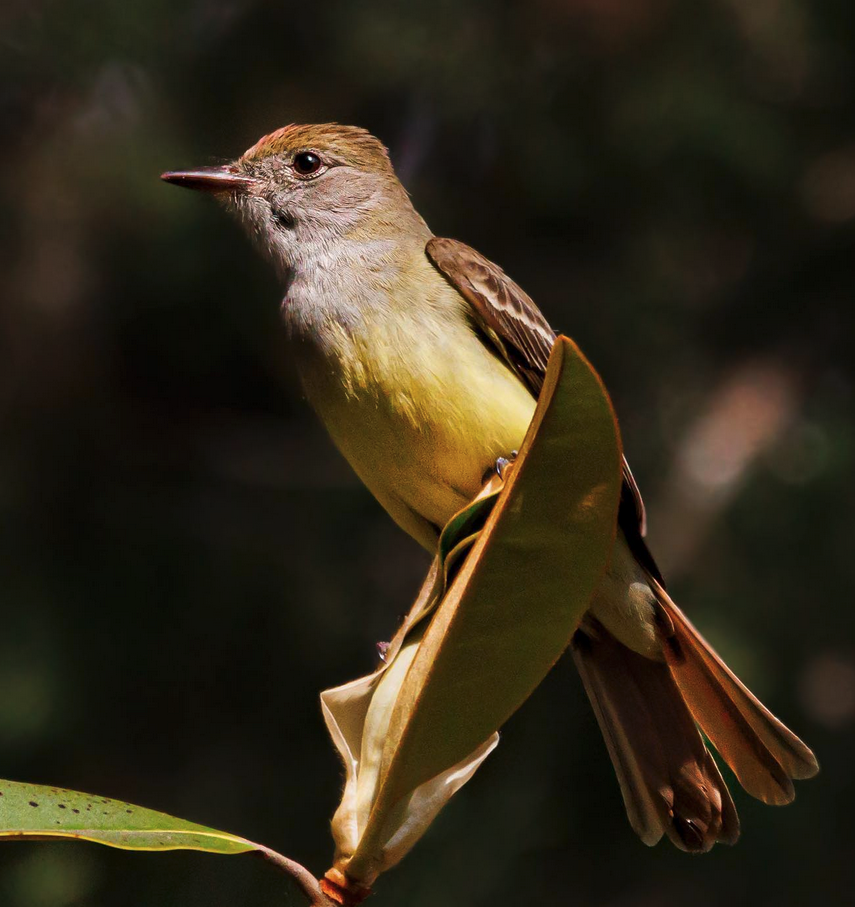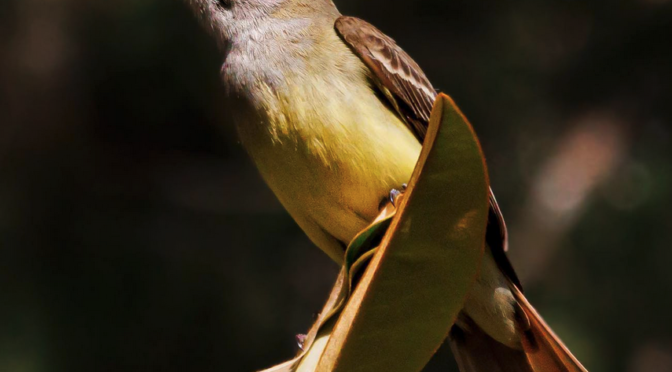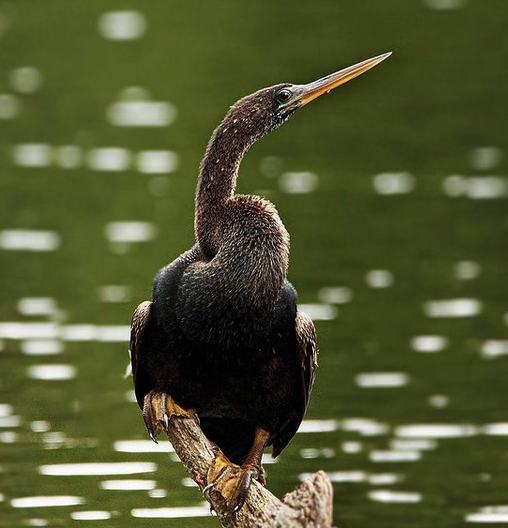Now that we are in mid-May the breeding season has arrived and the woods are noisy with bird songs. A few familiar calls ring amid the din. Cardinals, Wrens and Ovenbirds all sing at high decibels but one of the loudest is the voice of the Great Crested Flycatcher. Their emphatic screeches and high pitched whistles are easily picked out amongst the chaotic symphony of chirps and squeaks encountered when birding in Central North Carolina during the spring.

Great Crested Flycatchers are busy birds at this point of the year as they pair up with a mate and begin the task of building a nest.
These guys are the only species of flycatcher in the state which nests in the cavities of trees.
Yet instead of creating their own holes, they use old woodpecker cavities and even bird boxes and Purple Martin condos for nesting sites.
Their breeding habitat is found in a varied array of forests, though they slightly favor drier habitats as found in pine-oak forests, open longleaf pine forests, oak-hickory forests, as well as in bottomland and swamp forests.
For some reason they tend to avoid areas with spruce or fir trees.
A bird familiar with suburban life, Great Crested Flycatchers can also be found nesting in wooded residential areas, especially in our Coastal Plain regions.
These lovely feathered gems may be found in all of North Carolina’s 100 counties from now through mid September.
This means you’ve got plenty of time to go out there and see one for yourself soon!
Photo by @sally_siko of @bestlife_birding both captured on my mighty mirrorless monster, the @canonusa #R5






